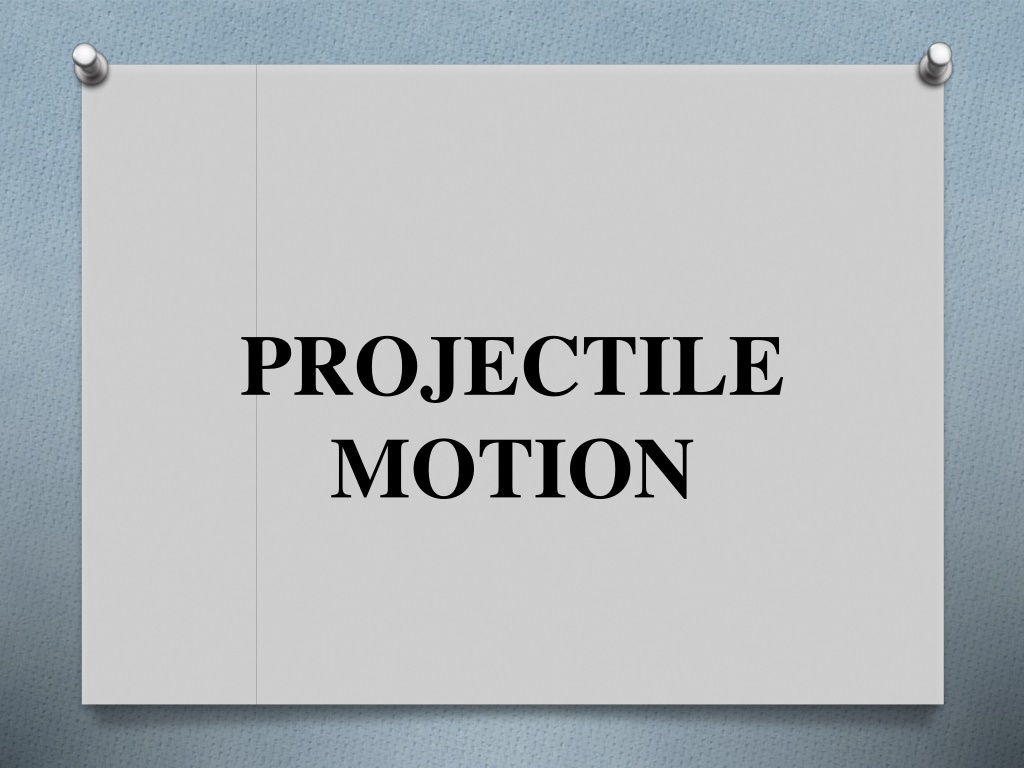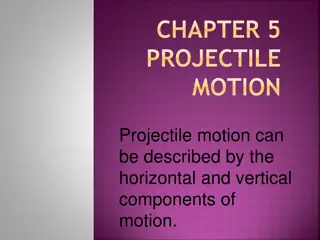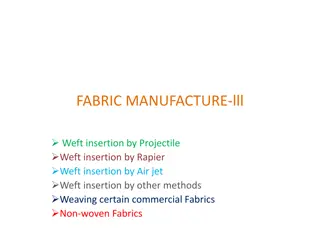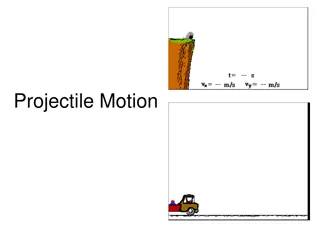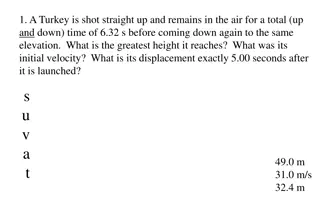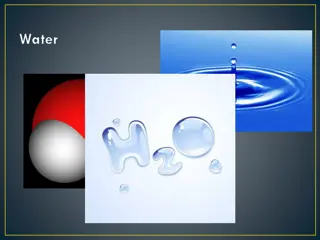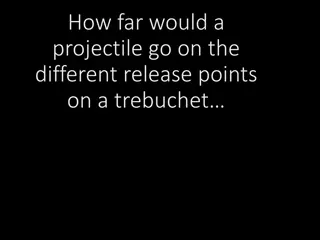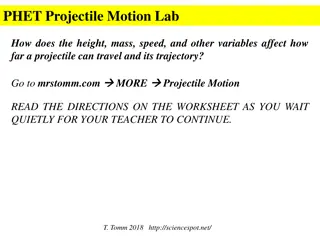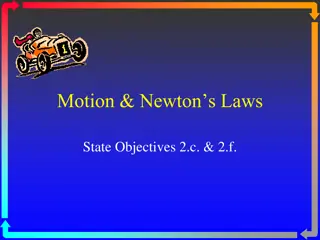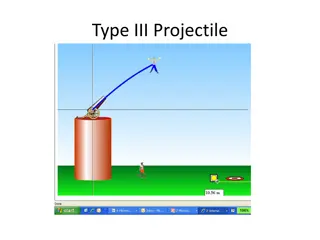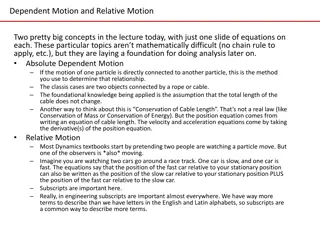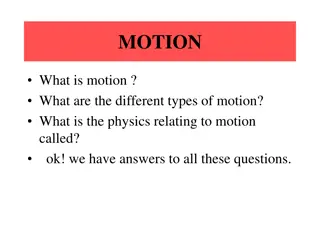Understanding Projectile Motion: Characteristics, Examples, and Formulas
Projectile motion involves the motion of objects under the influence of gravity, with both vertical and horizontal components. This type of motion is seen in activities such as throwing a ball, kicking a football, or dropping objects. The motion is described by specific formulas, including calculating ranges and times. Projectile motion is characterized by two types of motion - one along the x-axis with uniform velocity and another along the y-axis with uniform acceleration due to gravity. Explore the principles, examples, and formulas of projectile motion in this comprehensive guide.
Download Presentation

Please find below an Image/Link to download the presentation.
The content on the website is provided AS IS for your information and personal use only. It may not be sold, licensed, or shared on other websites without obtaining consent from the author. Download presentation by click this link. If you encounter any issues during the download, it is possible that the publisher has removed the file from their server.
E N D
Presentation Transcript
PROJECTILE MOTION
Projectile O Aprojectile is an object upon which the only force is gravity. O Gravity acts to influence the vertical motion of the projectile, thus causing a vertical acceleration. O The horizontal motion of the projectile is the result of the tendency of any object in motion to remain in motion at constant velocity.
Projectile motion O Projectile motion is the motion of an object thrown or projected into the air, subject to only the acceleration of gravity. O We consider two-dimensional projectile motion, such as that of a football or other object for which air resistance is negligible.
Representation of projectile motion
What is projectile motion with example? O You throw the ball straight upward, or you kick a ball and give it a speed at an angle to the horizontal or you just drop things and make them free fall; all these are examples of projectile motion. O In projectile motion, gravity is the only force acting on the object.
What is the formula for projectile motion? O An object launched into projectile motion will have an initial launch angle anywhere from 0 to 90 degrees. O The range of an object, given the initial launch angle and initial velocity is found with: R=?2???2??/? R ??2???2??/?
How do you calculate time in projectile motion? O Determine the time it takes for the projectile to reach its maximum height. O Use the formula (0 - V) / -32.2 ft/s^2 = T where V is the initial vertical velocity. O In this formula, 0 represents the vertical velocity of the projectile at its peak and -32.2 ft/s^2 represents the acceleration due to gravity.
What are the 2 types of projectile motion? O In a Projectile Motion, there are two simultaneous independent rectilinear motions: O Along the x-axis: uniform velocity, responsible for the horizontal (forward) motion of the particle. O Along y-axis: uniform acceleration, responsible for the vertical (downwards) motion of the particle.
What are the 2 components of projectile motion? O There are the two components of the projectile's motion o horizontal and o vertical motion. O Perpendicular components of motion are independent of each other.
FACTORS AFFECTING PROJECTILE MOTION There are three main factors that affect the trajectory of an object or body in flight: O the projection angle. O magnitude of projection velocity. O height of projection.
What is the maximum height of a projectile? O The maximum height of the object is the highest vertical position along its trajectory. The maximum height of the projectile depends on the initial velocity v0, the launch angle , and the acceleration due to gravity. The unit of maximum height is meters (m).
Representation of maximum height of projectile
What's a trajectory? O the curve that a body (such as a planet or comet in its orbit or a rocket) describes in space. O a path, progression, or line of development resembling a physical trajectory an upward career trajectory.
Does Weight Affect projectile motion? O The greater the weight of an object, the greater the influence of gravity upon it. Gravity will affect a projectile as it will decrease the height the projectile can obtain. The force of gravity acts on the object to stop its upward movement and pull it back to earth, limiting the vertical component of the projectile.
Does height affect projectile motion? O The height of release affects the trajectory of the projectile and, for a given speed of release and angle of release, the horizontal displacement increases as the height of release increases.
How does an angle affect projectile in motion? O Higher launch angles have higher maximum height. O The maximum height is determined by the initial vertical velocity. Since steeper launch angles have a larger vertical velocity component, increasing the launch angle increases the maximum height.
How is projectile motion used in real life? O Basketball shooting is a basic practice for players. The path of the ball from the players to the hoop is projectile motion.We found that the value of optimal angle and minimum initial velocity decreases with increasing the height of the ball before the player shoots the ball.
What is the importance of projectile motion in our daily life? O In our daily life, a projectile is an object upon which the only force acting is gravity. widely used by people who extinguish fire. People who has to extinguish fire in a little longer distance from their stay show the tubes in an angle so that the water hits the fire, thus extinguishing it.
What are the uses of projectile? O Railguns utilize electromagnetic fields to provide a constant acceleration along the entire length of the device, greatly increasing the muzzle velocity. Some projectiles provide propulsion during flight by means of a rocket engine or jet engine. In military terminology, a rocket is unguided, while a missile is guided.
